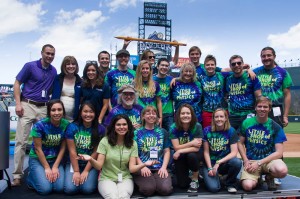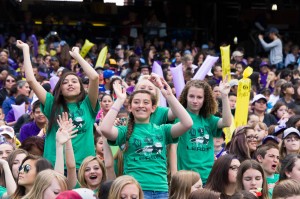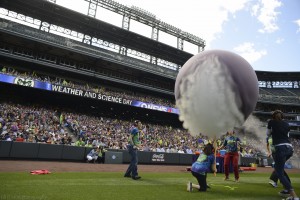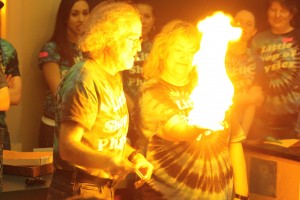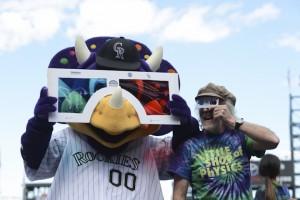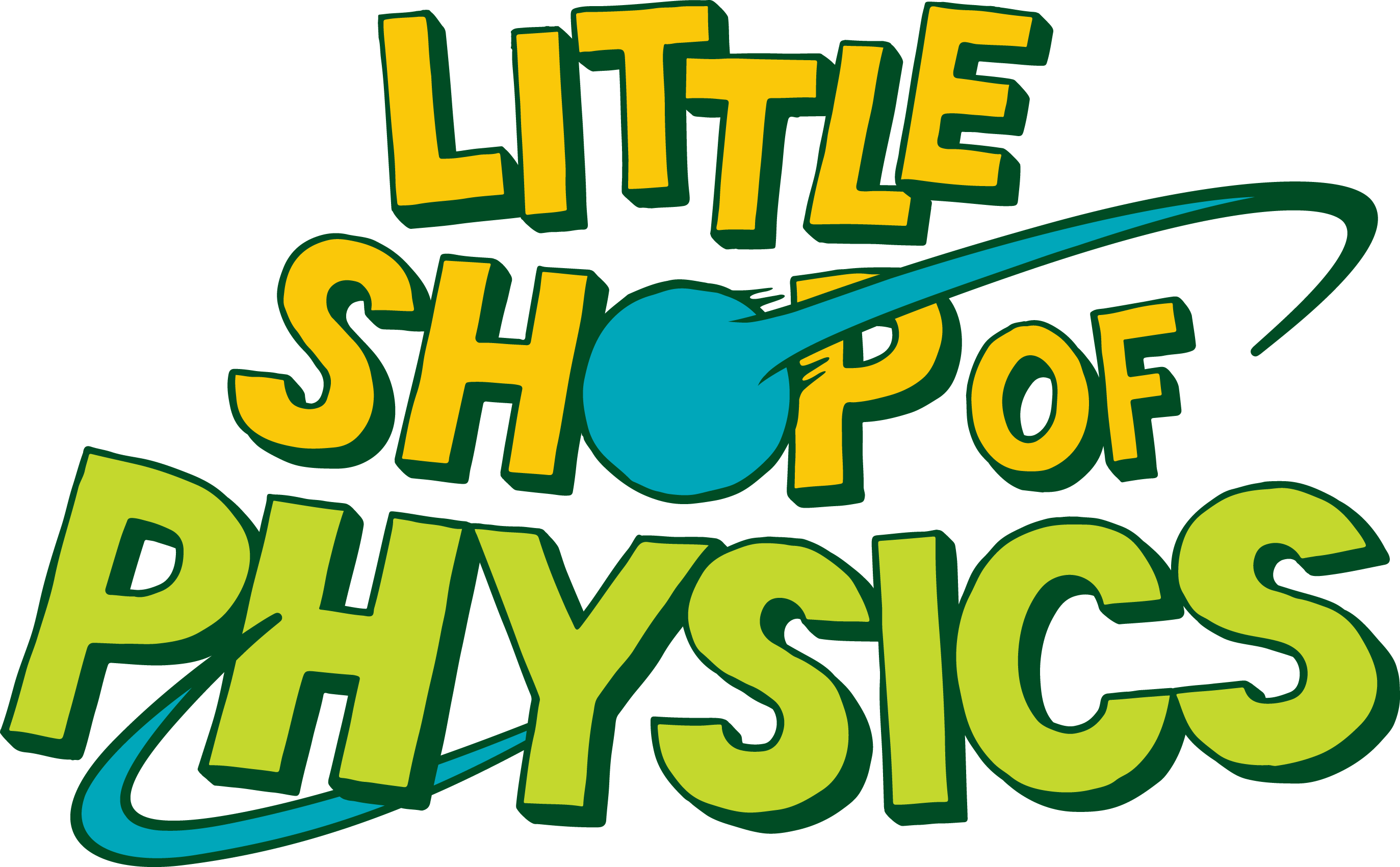In 2014, Colorado State University’s Little Shop of Physics team put on a show with the Colorado Rockies and the weather folks from 9News that will be certified as the World’s Largest Physics Lesson.
The team after the event
But it wasn’t just big… It was awesome.
Little Shop of Physics at Weather and Science Day 2014
How do we top this? By making the event even bigger and better, of course. Read on for details.
The Event
Weather and Science Day 2015
Coors Field
Thursday, April 23, 2015
10:30 – 11:30 AM
After the program, attendees will stay to watch the Rockies defeat the San Diego Padres.
The Details
The program is designed to feel like a science class—a really big, really exciting class. We’ve got content to teach, concepts to explore. We’ll have 3 topic areas, with content matched to state science standards:
- Air
- Energy
- Time
Each topic area will have a central point that will be illustrated with big demonstrations on the field, smaller demonstrations in the stands, and hands-on experiments that everyone present will perform.
After we explore the science, we’ll look at applications—to weather, and (of course!) to baseball.
Each attendee will receive a bag with 6 different pieces of science equipment: Chromadepth glasses, a reaction time ruler, a phase change heat pack… and more!
Come prepared to be active!
The Highlights
Air
If you fully inflate an eight foot weather balloon, the air inside weighs nearly 20 pounds. When the balloon pops, the rubber can’t just push this air out of the way; it “unzips” from around the air. If you fill the balloon with fog, you can see this happen.
At Weather and Science Day 2014
Now, imagine this with a balloon that’s twice as big… That’s what we have planned for this year.
The point is this: Air has mass. And pushing air around means moving mass. Once the wind gets moving it keeps moving. And a spinning baseball will follow a curving path.
Energy
Energy is conserved; it can’t be created or destroyed, only converted from one form to another. Knowing a bit about energy lets you do some amazing things—like hold fire in your hand.
Don’t try this at home!
We’ll have 150 CSU student volunteers do just this.
We’ll then use the idea of energy transformations to explain how thunderstorms grow and why baseball players use bats that are surprisingly light.
Time
Light is a wave, and different colors “wave” more or less quickly: Blue is faster, red is slower.
How about a wave in the earth? We’ll have everyone jump on cue, and measure the time for the wave to get to the outfield.
Of course, time matters a great deal in baseball—we’ll let you test your reaction time and compare it to typical times in baseball. The game as a whole has a leisurely pace, but when a line drive is coming at you, you’ll need to react quickly!
Details from the Day
Now that the event is over, we are posting slides & other details. Stay tuned!
WSDSlides The slides that showed on the big screen during the program
For More Information
Weather and Science Day A page with details on tickets, times, and parking.
Little Shop of Physics Our home page, with more about our program.

